The MSI B450 Tomahawk Motherboard Review: More Missile Than Axe
by Gavin Bonshor on December 11, 2018 8:00 AM EST- Posted in
- Motherboards
- AMD
- MSI
- Zen
- AM4
- Ryzen
- Tomahawk
- Ryzen 2
- B450
- Entry Level
- MSI B450 Tomahawk
Visual Inspection
The B450 Tomahawk is an ATX sized motherboard which comes from MSI’s Arsenal Gaming range with a heavy focus on value. The board does not have an overburdened PCB, which gives the black and grey color more pop. The patterning across the board resembles a circuit board (of sorts) and the light gunmetal grey MOSFET/chipset heatsinks offer a sense of uniformity to the design. The B450 Tomahawk includes a single section of eight RGB LEDs in a vertical alignment on the underside of top right-hand side of the board. Users wishing to expand upon have access to two 5050 RGB headers which are both capable of supporting strips with a maximum of 12 V. Comparing the B350 Tomahawk to the B450 Tomahawk, the heatsink follows a much sleeker design with MSI focusing a lot of its attention on improving the power delivery cooling capabilities, as well as the cleaner and more neutral looking aesthetics.
MSI’s implementation of the PCIe layout focuses around the center of the board with the solitary and full-length PCIe 3.0 x16 slot getting a garnishing of Steel Slot armor protection. This is designed to minimize the risk of slot damage from heavy graphics cards when in transit. The rest of the available PCIe slots all conform to the PCIe 2.0 interface, with a second full-length PCIe 2.0 x4 slot for add-in cards.
The improved firmware over the first iteration of AM4 motherboards allows for faster memory. The B450 Tomahawk supports DDR4-3466 straight out of the box, and with the four available RAM slots it allows for a maximum capacity of up to 64 GB. Unbuffered ECC is also supported.
The B450 Tomahawk has better than average SATA support for a B450 board, with a total of six SATA ports. Four of the ports are from the B450 chipset, and two are driven directly from the CPU internal IO. The ports are split across the bottom right-hand side of the board with four of the ports banked together with right-angled connectors, whereas the other two ports are on the bottom of the boards PCB with cheaper straight connectors. The available SATA ports do have support for RAID 0, 1 and 10 arrays.
Also on storage, there is a single PCIe 3.0 x4 M.2 slot with support for PCIe and SATA drives, up to a maximum size of M.2 22110. Populating the M.2 slot with any drive does disable two SATA ports.
In terms of fan headers, there are six 4-pin headers which are split into three different areas; one for the CPU, one for a water pump/AIO fan and four designated for system fans. The rear panel offers eight USB ports in total (which is fairly standard for a motherboard in this price range) and users looking to expand on this can do so with a pair of USB 2.0 headers and a USB 3.1 Gen1 header. Power to the motherboard is provided through a 24-pin ATX power connector and for the CPU, an 8-pin ATX 12 V power input is present. Users looking to reset the CMOS can do so with an old-fashioned jumper which is located right next to the battery.
Focusing on the power delivery on the B450 Tomahawk, and we have a total of six phases which is split into a 4+2 configuration. This is the maximum supported limit of the Richtek RT8894A PWM controller which this board has. On the CPU section of the power delivery, each of the four true phases gets a pair of ON Semiconductor 4C029N high side MOSFETs which is complemented by a further two 4C024N low side MOSFETs also from ON Semiconductor. The SoC area, much like the CPU area, also uses ON Semiconductor MOSFETs with two 4C029 high side and two 4C024N low side assigned to each of the two SoC phases. A total of eight inductors are present across the power delivery which is split into two banks, four for the VCore and two for the SoC which gives a 4+2 power delivery configuration.
| AM4 Motherboard Power Delivery Comparison | |||||
| Motherboard | Controller | H-Side | L-Side | Chokes | Doubler |
| ASRock B450 Gaming ITX/ac |
ISL95712 (6+2) | 10 | 10 | 8 | - |
| ASRock B450 Gaming K4 |
ISL95712 (3+3) | 12 | 9 | 9 | - |
| ASRock X470 Taichi Ultimate |
IR35201 (6+2) |
16 | 16 | 16 | 8 |
| Biostar X370GTN | ISL95712 (4+3) |
7 | 7 | 7 | - |
| Biostar X470GTN | ISL95712 (4+3) |
7 | 7 | 7 | - |
| GIGABYTE X470 Gaming 7 Wi-Fi |
IR35201 (5+2) |
12 | 12 | 12 | 5 |
| MSI B350 Tomahawk | RT8894A (4+2) |
8 | 12 | 6 | - |
| MSI X370 XPOWER GAMING TITANIUM |
IR35201 (6+2) |
10 | 16 | 10 | 5 |
| MSI X470 Gaming Plus | RT8894A (4+2) |
14 | 14 | 11 | - |
| MSI B450 Tomahawk | RT8894A (4+2) |
12 | 12 | 6 | - |
When you compare the key differences between the power delivery featured on the previous Tomahawk to this, MSI has certainly upped their game so to speak. Firstly, MSI has ditched the more value-focused NIKOS MOSFETs in favor of those from ON Semiconductor, and the new B450 opts for four MOSFETs per phase.
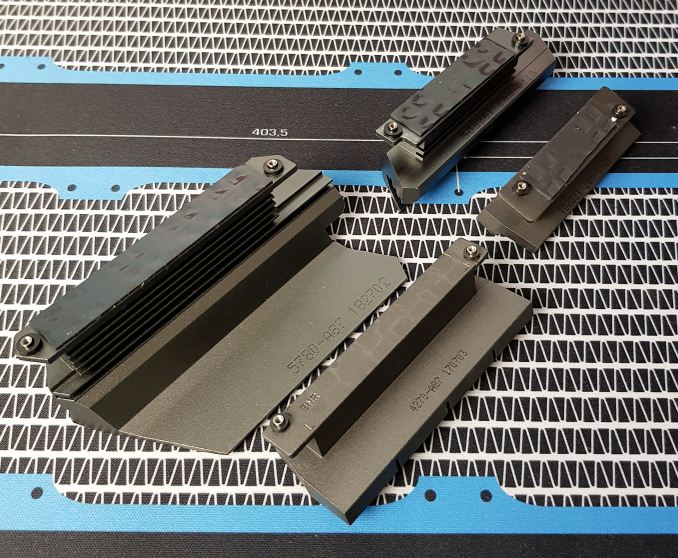
MSI B450 Tomahawk power delivery heatsinks (bottom left) next to the B350 Tomahawk heatsinks (top right)
The other major improvement over the previous generation Tomahawk comes through the included heatsinks. The B450 Tomahawk not only has much cleaner and stylish looking heatsinks, but MSI has both increased the mass and extended the VCore MOSFET heatsink to have a larger area on top. This should help with longevity and stability as far as temperatures go. One of the usual caveats of a ‘refresh’ is that manufacturers sometimes recycle PCB designs and only change the visual aspects, but in this case the B450 Tomahawk is a step up.
That being said, the audio area of the PCB on the B450 Tomahawk looks a little underwhelming in comparison. MSI has implemented the older Realtek ALC892 HD audio codec, which isn’t strange given the boards pricing. However it should be noted that the audio PCB on the B350 Tomahawk is certainly heftier with a total of ten Nippon Chemicon audio capacitors, which dwarves that of the B450 Tomahawk which has only four available.
As previously mentioned, the rear panel offers a total of eight USB ports. The B450 Tomahawk offers two USB 3.1 Gen2 ports, a Type-A and a Type-C. Other connections include a DVI-D port and a HDMI 1.4 port, a single PS/2 combination keyboard/mouse port, and a Realtek RTL8111H Gigabit networking controller. MSI has included a BIOS Flashback+ button as well.
What's in The Box
The accessory bundle as expected is rather basic but contains all the vital necessities to get a system up and running out of the box. MSI has scrimped a little on the SATA cables as they have included only two. Also present is a user manual, a driver and utility installation CD, a rear IO shield and an M.2 mounting screw.
- User manual and quick installation guide
- Driver installation CD
- 1 x M.2 installation screws
- 2 x SATA cables (1 right-angled, 1 straight-angled)
- Rear IO shield
- MSI Gaming shield sticker
- MSI thank you card


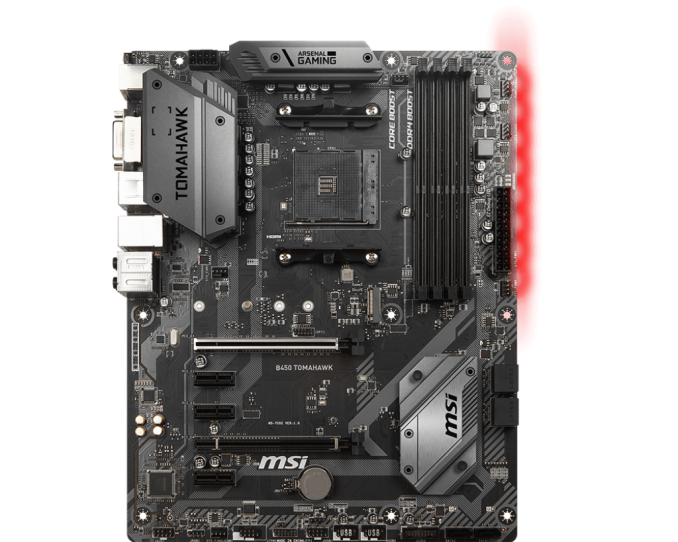

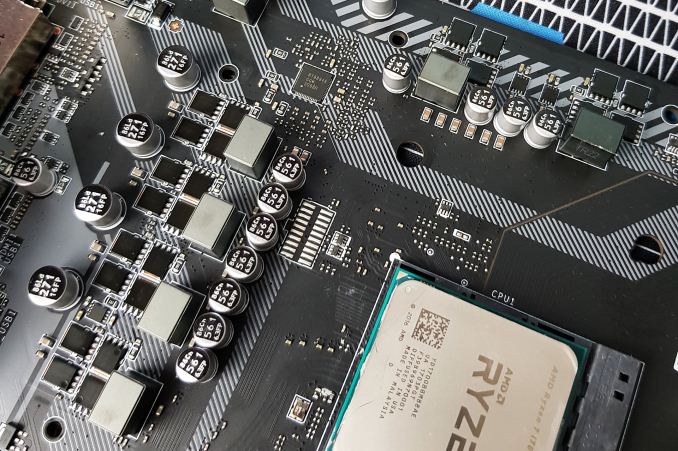
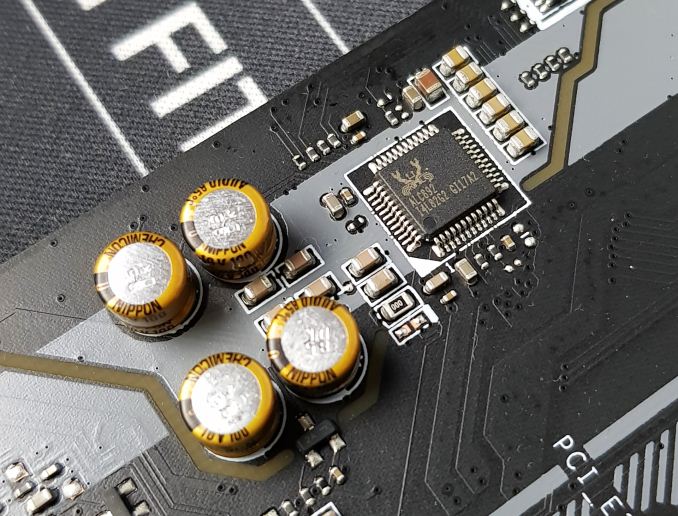

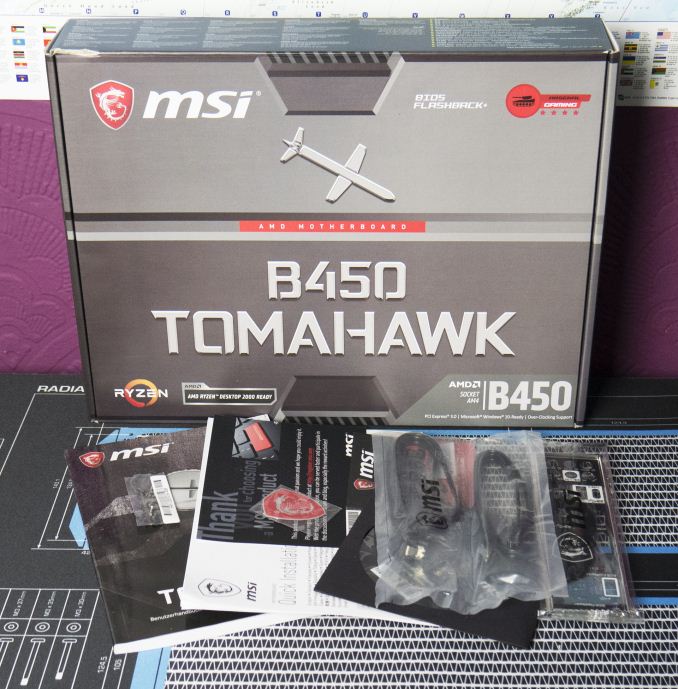








36 Comments
View All Comments
FoRealz - Tuesday, December 11, 2018 - link
I have two questions:1. Why are b/x/h 400 boards performing worse than their predecessors?
2. Why are ps/2 ports making a comeback?
I'm currently on an Asus z270 tuf mark 1 and my board has so much more than the newer tuf boards. (2 lans, etc) I'm really confused as to why boards have been going downhill nomatter Intel or AMD.
PeachNCream - Tuesday, December 11, 2018 - link
I don't understand PS/2 ports on new motherboards at this point. There aren't a lot of interface devices out there that have survived and I don't see indications that production of PS/2 keyboards and mice are still going. Legacy-free and/or using that IO cluster space for something else might be useful.The_Assimilator - Wednesday, December 12, 2018 - link
It's because of the eSports idiots who still believe that USB is inferior because it polls.gavbon - Wednesday, December 12, 2018 - link
That makes more sense - eSports, euuurgh!bananaforscale - Wednesday, December 12, 2018 - link
Well, it *is*, but you're not going to notice the difference. :P And if there's something at a higher priority than the USB driver, well...kn00tcn - Sunday, December 16, 2018 - link
that's just false, you just want an excuse to to act elitistthere is another anand article that explains why, figure it out if you're not an idiot
plonk420 - Friday, December 14, 2018 - link
it's OCing and gaming... USB sometimes has fits with certain types of OCing (BCLK, i think? i don't OC almost ever). also IIRC from a recent Carmack talk, PS/2 interrupts the OS to give its input, whereas USB input enters queues and buffers before being processedgavbon - Wednesday, December 12, 2018 - link
1. It could be driver/chipset driver related; we have also just had a change in our test suite/driver going forward for 2019.2. That's a hard one to answer. Budget boards tend to have them as well as overclocking focused motherboards more than premium models. It could be that they don't expect all budget users to have adopted USB yet? It's an interesting question though...
kn00tcn - Sunday, December 16, 2018 - link
if you're gavin, how did you forget ian's article for win7? https://www.anandtech.com/show/11182/how-to-get-ry...ps/2 is for win7, not budget
kn00tcn - Sunday, December 16, 2018 - link
'every' [citation needed] am4 mobo has ps/2, did you forget it supports win7? you cant even run the installation without usb drivers or ps/2 inputintel doesnt even provide win7 drivers, so nobody needs ps/2